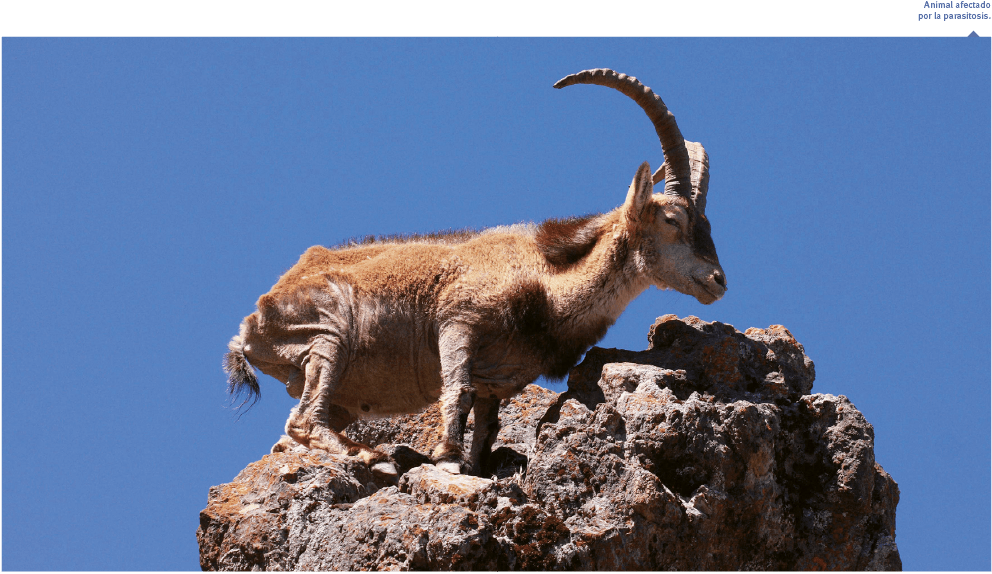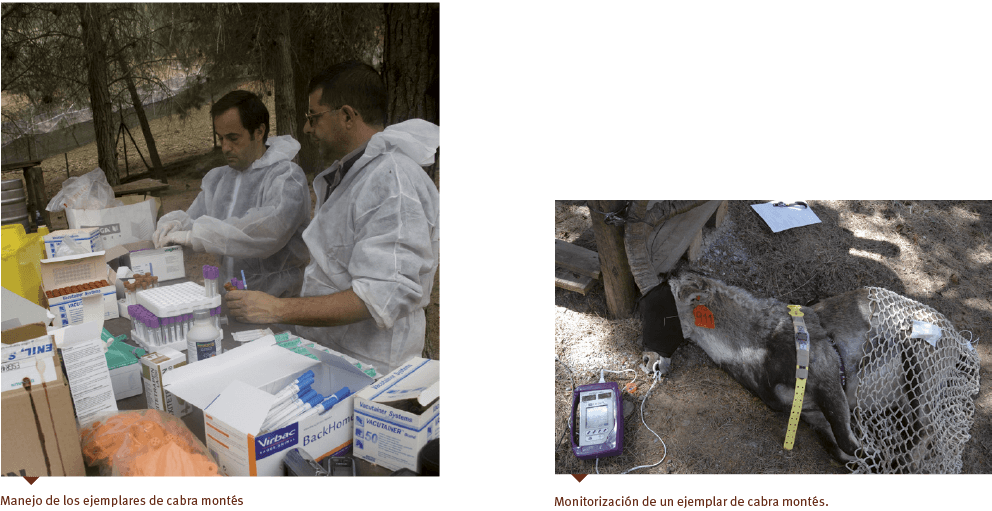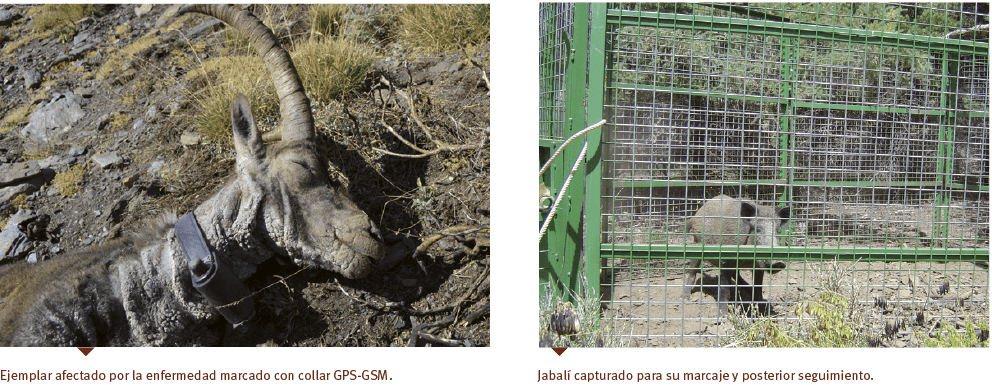
Aims
- To monitor and control scabies as well as other infectious/contagious diseases in Spanish ibex (Capra pyrenaica) populations.
- To supervise the state of health of the wild boar (Sus scrofa) population as a reservoir of epizootics and emerging diseases.

Method and effort
Spanish ibex
Since 1992, the Spanish ibex population has suffered an epizootic of scabies with 4% prevalence. The prevention of scabies includes measures to avoid or prevent the disease in uninfected groups. The main tool for the management of scabies consists of reducing the density of the hosts. This would diminish the probability of contact and therefore the transmission of the disease.
- Capture of live specimens, by physical methods (box-trap captures) as well as chemical ones (anesthesia).
- Sampling of biometric and biological data.
- Biological studies of the population (reproduction, indices of fat deposits on organs, etc.).
- Studies of parasites and other infectious/contagious diseases.
- Collaring and monitoring animals.
- Epidemiological analysis of scabies in the Spanish ibex population in Sierra Nevada. Resistant individuals are characterized and transmission of the parasitosis among individuals of the same group or between groups is studied.
- Thermography calibration as a diagnostic tool for scabies and as a gauge for characterizing the intensity of the parasitism.
- Estimation of the density of mites in the hides of animals affected by scabies, by real-time PCR.
- Characterization of oxidative stress of the hosts affected by scabies.
- Pathologies associated with different levels of infestation of Sarcoptes scabiei.
Wild boar
For the wild boar population on Sierra Nevada, the methodology has been designed to ascertain the presence and frequency of the vectors capable of provoking mass deaths or states of debility.
- Taking samples from animals killed in thinning the local population.
- Calculation of epidemiological values of different infectious agents that can provoke mass death or states of debility. Several infectious agents (parasites, bacteria, and viruses) are being monitored, given their epizootic and zoonotic nature.
- Diagnosis of tuberculosis in the specimens handled.

Periodicity
The works are undertaken daily, except for the hunting season (October-February).
References
Granados, J.E., Soriguer, R.C., Pérez, J.M., Fandos, P. y Serrano, E. 2007. La cabra montés. Bases para la implementación de un Plan de gestión de la cabra montés en Andalucía. Pp.: 677-698. En: Barea, J.M., Ballesteros, E., Luzón, J.M., Moleón, M., Tierno, J.M. y Travesí, R. (eds.). Biodiversidad y Conservación de fauna y flora en ambientes mediterráneos. Granada.
Granados, J.E., Castillo, A., Cano-Manuel, J., Serrano, E., Pérez, J.M., Soriguer, R.C. y Fandos, P. 2009. Gestión de la cabra montés. Manejo de sus poblaciones. Pp.: 452-485. En: Saez de Buruaga, M. y Carranza, J. (eds.) Gestión cinegética en los ecosistemas mediterráneos. Consejería de Medio Ambiente. Junta de Andalucía. Sevilla.
Ruiz-Fons, F., Segalés, J., Gortázar, G. 2008. A review of viral diseases of the European wild boar: effects of population dynamics and reservoir role. Vet. J., 176: 158-169.